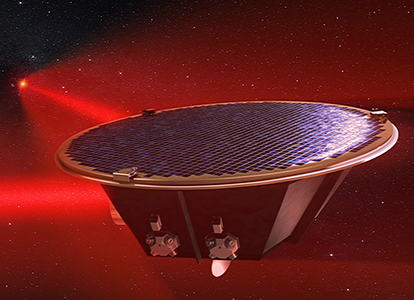 The Laser Interferometer Space Antenna (LISA) is the ESA L3 selected mission with launch expected in the early 2030s. LISA is aiming at detecting gravitational waves in space emitted by sources located in the whole Universe. LISA will enhance our knowledge about the beginning, evolution and structure of our Universe and provide highly accurate tests of the theory of general relativity in an entirely new regime. The observatory also has the potential to uncover hints about the nature of quantum gravity, thus contributing to fundamental physics. LISA builds on the success of LISA Pathfinder (LPF), which recently completed its mission after twenty years of technology development. The Swiss contribution to LPF consisted in the development of the Inertial Sensor Front-End Electronics (IS FEE), which sensed and controlled the position and the attitude of the test masses with respect to their frame. IS FEE was based on ultra-stable capacitive sensing and electrostatic actuation. The sensing and actuation required nanometer resolution and stability in the low-frequency band from 1 Hz down to 0.1.
The Laser Interferometer Space Antenna (LISA) is the ESA L3 selected mission with launch expected in the early 2030s. LISA is aiming at detecting gravitational waves in space emitted by sources located in the whole Universe. LISA will enhance our knowledge about the beginning, evolution and structure of our Universe and provide highly accurate tests of the theory of general relativity in an entirely new regime. The observatory also has the potential to uncover hints about the nature of quantum gravity, thus contributing to fundamental physics. LISA builds on the success of LISA Pathfinder (LPF), which recently completed its mission after twenty years of technology development. The Swiss contribution to LPF consisted in the development of the Inertial Sensor Front-End Electronics (IS FEE), which sensed and controlled the position and the attitude of the test masses with respect to their frame. IS FEE was based on ultra-stable capacitive sensing and electrostatic actuation. The sensing and actuation required nanometer resolution and stability in the low-frequency band from 1 Hz down to 0.1.
The LISA mission consists of three identical spacecrafts forming an equilateral triangle in a heliocentric orbit following the Earth and maintaining a mutual spacecraft-to-spacecraft distance of 2.5 million kilometres. The Gravitational Reference Sensor (GRS) is the core of the LISA instrument. It hosts the test masses that are the free-falling reference for the measurement of the gravitational waves.
Our Work
AEIL is responsible for the LISA GRS FEE, which is the sensing and control electronics for the GRS. GRS FEE is the Swiss Contribution to LISA. It is based on 100 kHz capacitive sensing and audio-frequency actuation . It has both High Resolution and Wide Range modes, offering, respectively, science mode operation with small displacements (up to 100 μm) and small actuation forces (several nN) and a test mass acquisition/accelerometer mode with “wall-to-wall” sensing (4 mm) and larger (μN) forces. The sensing and actuatio for LISA GRS requires ultra stable performances in the low-frequency band from 1 Hz down to 20 μHz.
Currently, the GRS FEE is in the Phase A of the mission, AEIL is establishing the instrument requirement specifications and developing the instrument design concept.
